Film Inquiry Recommends: 1955 in Film

Alex is a 28 year-old West Australian who has a…
Over at our official Facebook page, we are currently posting daily film recommendations, with each week being a different theme. This is a collection of those recommendations! This week’s theme is focused on the year 1955.
1955 is a great year in highlighting the transition from classic Hollywood cinema, which featured mainstream-friendly entertainment manufactured by several dominant American studios, as whilst they were still successful, foreign cinema and progressive American movies started to filter in, which would go onto influence many important film movements, such as the French New Wave and the 70’s era of experimentation.
1955 was quite a heavy year in cinema, so we quickly want to highlight some of the titles that we missed on this list that are still worth checking out – Delbert Mann’s Marty; Walt Disney’s Lady and the Tramp; Billy Wilder’s Seven Year Itch (featuring the infamous Marilyn Monroe blouse scene); Carl Theodore Dreyer’s Ordet and Nicholas Ray’s Rebel Without A Cause and plenty more.
1. Rififi (1955, Jules Dassin)
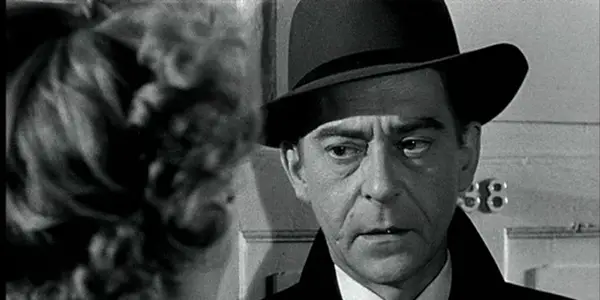
Rififi is about Tony le Stéphanois (Jean Servais), an older criminal who has just been released from a five-year sentence. Tony meets his friends Jo Le Suedois and Mario Ferrati, who invite Tony to steal a couple of jewels from the famous jewellery store Mappin & Webb Ltd, but he initially declines. After meeting with his former girlfriend who turns out to have moved on, he decides to go through with the heist.
They invite the Italian specialist in safe-cracking, Cesar, to join their team and they plot a perfect heist. The heist goes well, but when Cesar starts to move the merchandise around, the wrong type of people start to take notice. The film’s commercial and critical success started Dassin’s streak of directing films in Europe, which he would continue for the rest of his life.
One of the pioneering films of heist cinema, Jules Dassin’s French film noir classic Rififi is still as cracking today as it was back then. Originally helmed by Jean Pierre Melville (who would go onto make the very similar Le Cercle Rouge), Dassin was given the job five years after being blacklisted from Hollywood. After the success of Brute Force, The Naked City and Night and the City, the Blacklist party, due to his involvement with the USA Communist Party, targeted Dassin. Whilst not a fan of the original novel that the film was based on, Dassin took the job due to the lack of other work.
Stripping a lot of the elements from the book, Dassin was under a lot of pressure when making the film, due to the combination of working with a low budget, a cast of non-famous actors and a production staff who weren’t getting paid much. Even with these problems, it’s amazing that Dassin pulled off the film, one which continues to be incredibly influential in French and crime cinema. The film’s most famous scene is the complex heist scene in the middle of the film, a 30-minute scene played completely in silence, a stunning sequence driven by increasing tension.
2. Bad Day at Black Rock (1955, John Sturges)
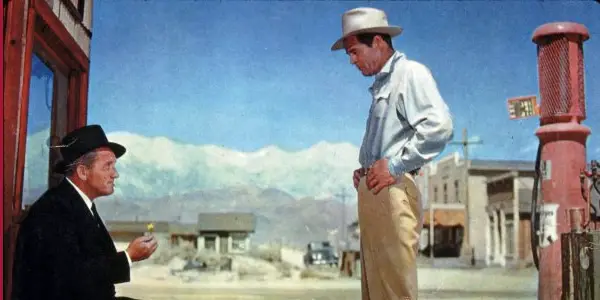
Bad Day At Black Rock is quite an unusual film for its time and is quite a unique combination of western, noir and paranoia film genres. Based on the short story “Bad Time At Honda” by Howard Breslin, Bad Day at Black Rock is about John J. MacReedy (Spencer Tracey, in one of his best roles), who mysteriously shows up in the isolated desert town of Black Rock, seeking a Japanese man named Komoko.
From the start of his journey, MacReedy is frequently harassed and threatened, with various townsfolk telling him that Komoko has left town and so should he. As his frustrations between the lack of truth and the aggressive treatment rise, MacReedy changes from a tired old man who has given up on life to a revitalised guy who won’t let anyone stand in his way on the search for justice.
For its time, the film is quite progressive, due to the film’s portrayal of American-Japanese relations, showing the hypocrisy of mistreatments of other races between the aggressor and the victim. The film’s use of violence and the treatment of female characters is surprising as well, being quite more violent than many other films of the time. The film’s supporting cast, such as Lee Marvin and Ernest Borgnine, do a great job of establishing the aggressive tone of the town, immediately setting themselves up as a threat that MacReedy must overcome.
The inclusion of martial arts in a mainstream American movie was quite revolutionary at the time, showing martial arts as an effective fighting style without overplaying it or parodying it. Bad Day at Black Rock is an immensely enjoyable film, featuring a bad-ass lead performance by Spencer Tracey in a film that still feels original today.
3. Lola Montes (1955, Max Ophuls)
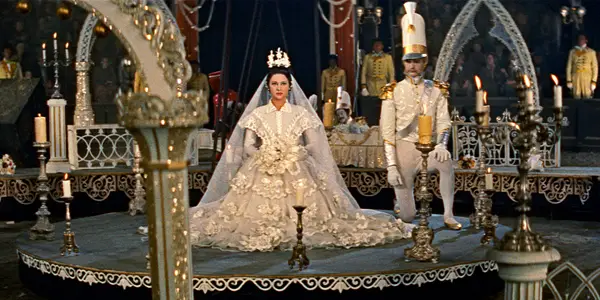
Max Ophuls’ final film, (his only one in colour), is a romantic melodrama, an exploration on celebrity life told via a dazzling visual style. Based on the life of the notorious nineteenth-century entertainer Lola Montez, a self-made celebrity who lived on the power of scandal, the film is told via various flashbacks during Lola’s final days as the main attraction in a travelling circus.
After a regular upbringing, she is forced to marry a man that she does not love in order to satisfy her mother. Despite this, Lola (played by Martine Carol) works and builds herself into a celebrity dancer, allowing her to court many different men, each which progressively diminish her famous career.
A commercial failure at the time, the film’s image has grown in stature since then, being lauded as one of Ophul’s best films and one of the best French films ever made. The film was Ophul’s final film due to his death in 1957, two years after this release, with this film ending his career on a respectable note. The film’s frequent use of flashback confused audiences at the time, as it was a story-telling technique used very sparingly.
Due to its poor commercial performance, the movie was given poor treatment by the distributors and largely forgotten. A recut, poor print of the film circulated screenings for years until the work of many admirers, critics and filmmakers alike, eventually restored the film to its original intentions. The film’s use of non-linear storytelling, intense cinematography and mixture of various languages spoken made the film quite unique, and the film went on to influence the French New Wave movement, one which celebrated independent filmmaking and non-linear storytelling through filmmaking experiments.
4. Night and Fog (1955, Alain Resnais)
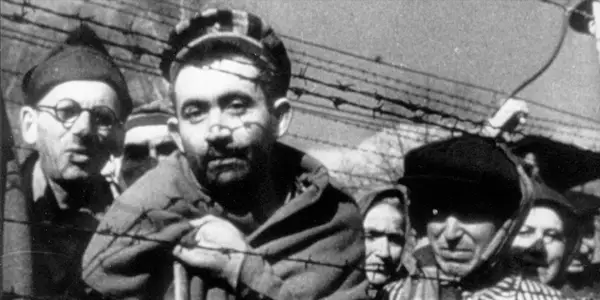
Whilst we usually avoid short films in these lists, Night and Fog is a film too important to leave out when highlighting the year of 1955 in film. Clocking in at only 32 minutes, Resnais delivers quite the devastating punch in a documentary about the lives of the people in concentration camps. Shifting between the abandoned sights of Majdanek and Auschwitz and telling the stories of the people that were imprisoned within them, the film is an informal but ultimately heartbreaking documentary showing the brutal truth behind what the Nazi party were doing during World War 2.
Narrator Michel Bouquet details the rise of the Nazi Party and how they came into power, comparing the lives of the Nazi soldiers and the suffering prisoners within the camp and the constant abuse and torment they sadly had to suffer. The film shows these experiences and stories in their full form, which are quite confronting and will definitely have a lasting effect on you. The film shifts from black and white to colour, touring the closed down camps and what became of them.
Alain Resnais was initially reluctant to make the film; Jean Cayrol, a concentration camp survivor and scriptwriter of the film, personally asked Resnais to make the film. Resnais had a tough time making it, due to its confronting nature and constant graphic imagery. In a 2014 Sight and Sound poll, film critics voted Night and Fog the fourth best documentary film of all time, with added praise from famous french director François Truffaut, who referred to it as the greatest film ever made. Still as effective and impactful today as it was back then, Night and Fog is an important documentary film worth watching to remind us of the effects of war.
5. Les Diaboliques (1955, Henri-Georges Clouzot)
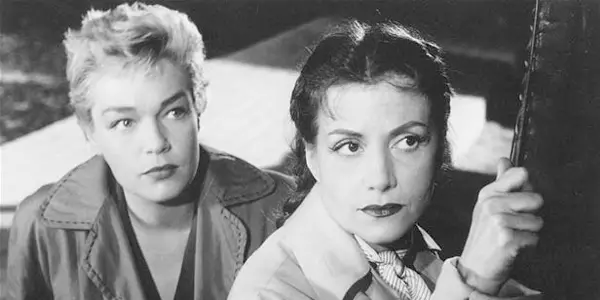
The infamous story behind this film is that, after reading the novel “She Who Was No More” by Pierre Boileau and Thomas Narcejac, Alfred Hitchc*ck rang the pair to immediately buy the rights to make the book into a film, but was beaten by French director Henri-Georges Clouzot by 30 minutes. As a response to Hitchc*ck’s loss, the pair eventually wrote another novel “From Among The Dead”, which Hitchc*ck would be given the rights to, which turned into Vertigo.
Whilst Hitchc*ck is a master of his profession, Clouzot’s direction really works in the film’s favour, an atmospheric horror film which is still quite effective. Christina Delassalle (Véra Clouzot), wife of abusive school headmaster Michel Delassalle (Paul Meurisse) decides to team up with his mistress Nicole (Simone Signoret) to kill him. They both drown him in a bathtub and dump the body in the school’s pool to make it look like an accidental drowning. But when the school’s pool is drained and the body is missing, Christina is slowly turned insane by the increasing fear of what happened to the body, truncated by all the weird events happening around her.
The film doesn’t go for cheap scare tactics, it’s a slow-building atmospheric drama which slowly gets more tense as the film goes on, building towards the film’s unforgettable climax. Due to the film’s twist ending, it was one of the first films to incorporate a spoiler warning in the credits, warning its viewers to spoil what happened (a technique that Hitchc*ck used in Psycho).
The film has been remade countless times by Americans; Games, Reflections of a Murder and Diabolique, the most faithful American remake. The detective character, Charles Vanel as Alfred Fichet, is the major inspiration for the American TV character Columbo, due to his mannerisms and style of detective work.
6. Mr. Arkadin (Aka Confidential Report) (1955, Orson Welles)

Described by Orson Welles as the biggest disaster of his life due to loss of creative control on the film, Mr. Arkadin is one of Welles’ more experimental efforts, a European-infused mystery which feels like a pseudo-remake of Citizen Kane. Guy Van Stratten (Robert Arden), an American smuggler recently released from prison, is on the hunt for the mysterious millionaire Gregory Arkadin (Orson Welles).
After getting a tip from a dying man inside prison, Guy wants to investigate Arkadin in order to access his wealth. To get rid of Guy, Arkadin claims amnesia about his own life prior to 1927, sending Guy off to investigate his unknown past. Guy’s quest to uncover Arkadin’s past digs himself into a deeper hole that may result in his death. Guy’s investigation, which entails different locations with different people, is very reminiscent of the reporter’s investigation of Charles Foster Kane in Citizen Kane, but with much darker undertones and playing with the mystery element of the story more.
The film was written by Welles, based on a collection of episodes of the Third Man radio show (a show based on The Third Man movie, which remains one of Welles‘ most famous roles) but due to the film’s increasing budget and arthouse values, studios got nervous and revoked creative control from Welles. Various cuts of the film exist, with the titles shifting from Confidential Report to Mr. Arkadin, with Welles’ true vision lost.
This is a problem that Welles‘ frequently ran into after Citizen Kane, with The Magnificent Ambersons being taken away from him and problems with Lady From Shanghai and Touch of Evil, led to Welles’ being completely fed up with Hollywood. This is why his later features grew much more experimental and he resorted to mainstream projects (such as the animated Transformers Movie) to make income to fund his personal projects.
7. The Big Knife (1955, Robert Aldrich)
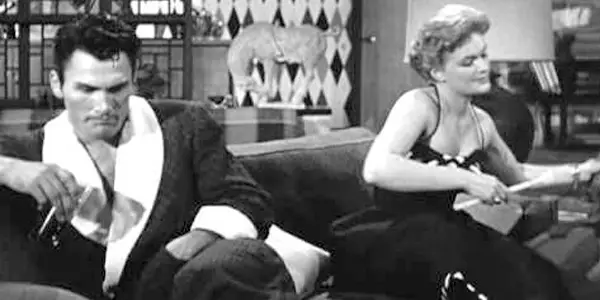
A Hollywood-set noir from Robert Aldrich, director behind such hits as Kiss Me Deadly, What Ever Happened to Baby Jane?, The Dirty Dozen and The Longest Yard. Whilst his other noir released that year, Kiss Me Deadly, is much more experimental and influential in the noir genre, The Big Knife is usually overlooked because of it. In the screen adaptation of Clifford Odets’ play of the same title, The Big Knife is about successful Hollywood actor Charles Castle (Jack Palance), who frequently chooses big blockbusters that pay well over artistic efforts which would gain him more credibility.
Castle is constantly pressured by the figures around him, such as his family, friends and studio personnel for their own needs. He is drawn into a murderous cover-up to save his career, which like many other noir films, draws him deeper into a cesspool which will destroy everything that he has created.
The film is an attack on the old school 1950’s style of film-making, when the studio system ruled the cinematic landscape and public perception was such an important aspect in achieving mainstream success. The film is not quite as cinematic as Aldrich’s other films, with its play to film transition being slightly stiff, as it features frequent bouts of characters merely talking in non-dynamic settings.
Rod Steiger is radiant as Stanley Shriner Hoff, a powerful figure who dominates every scene that he appears in. Whilst the lack of dynamic locations may bore some viewers, the plain settings really allow the interplay between the characters to really shine, the dialogue exchanges are fiery and delivered well by the eclectic cast. A lesser-known Hollywood film, The Big Knife is a film worth checking out for any noir fans seeking something new.
What are some other films from 1955 that you can recommend?
Does content like this matter to you?
Become a Member and support film journalism. Unlock access to all of Film Inquiry`s great articles. Join a community of like-minded readers who are passionate about cinema - get access to our private members Network, give back to independent filmmakers, and more.













